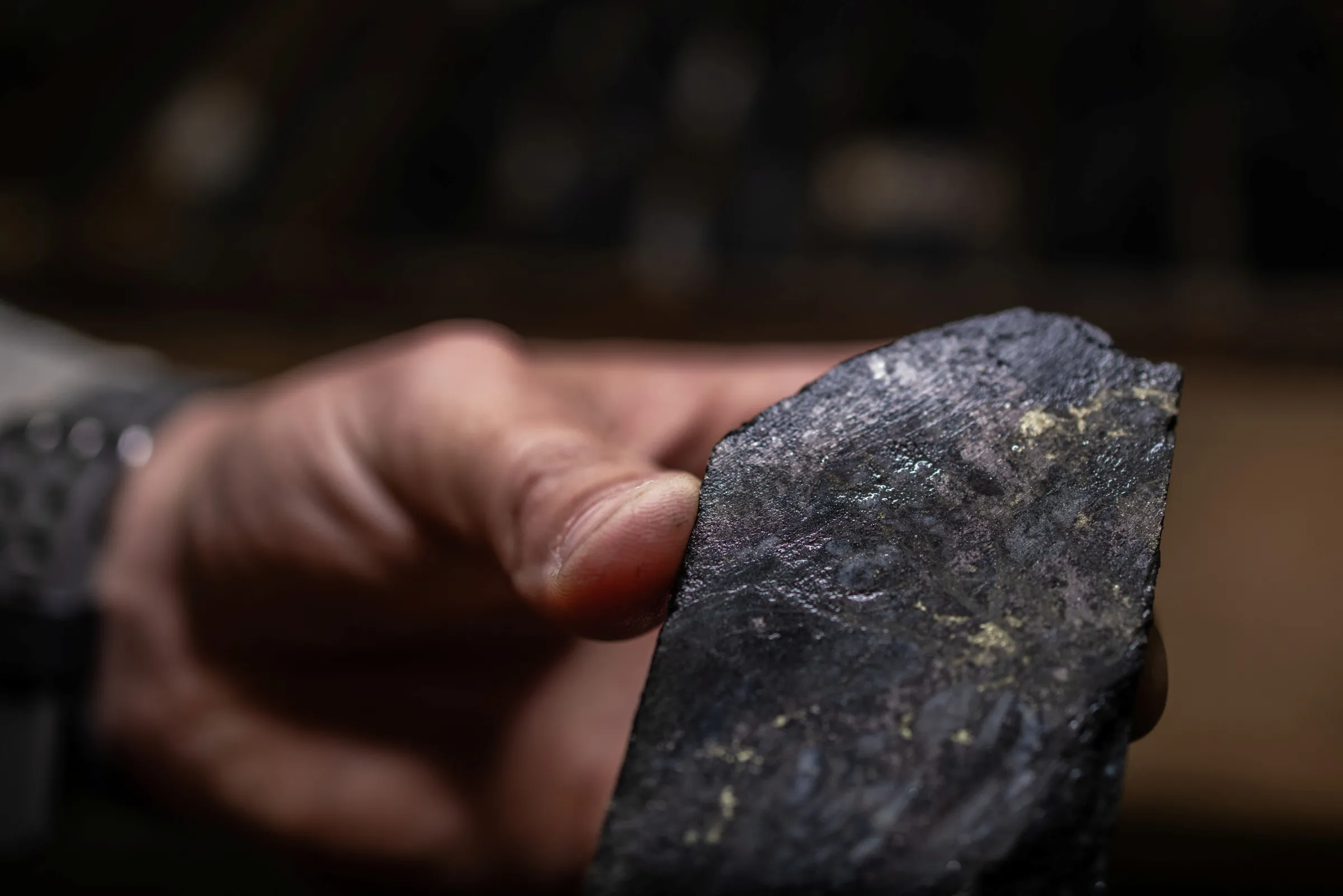Context is powered by the Thomson Reuters Foundation Newsroom.
Our Standards: Thomson Reuters Trust Principles

A sample of rock drilled at a cobalt mining site operated by Jervois Global is seen at a facility, west of Salmon, Idaho, May 16, 2024. REUTERS/Carlos Barria
Trump's minerals-for-security deals puts green minerals in the spotlight.
BRUSSELS - Critical minerals are playing an increasing role in global diplomacy, with Democratic Republic of Congo seeking to trade its resources for security guarantees from the United States, which has brokered a similar deal with Ukraine.
With demand for minerals vital for renewable technologies set to almost triple by 2030, the race for resources such as lithium and cobalt is set to ramp up this year as Europe and North America seek to break China's grip on the supply chain.
But the environmental and social consequences for local populations are also growing as resource-rich countries accelerate the global green rush.
The largest country in sub-Saharan Africa, DRC is home to vast reserves of strategic minerals such as coltan, cobalt, copper and lithium. Its mineral wealth is estimated at $24 trillion.
Conflict has periodically flared up for decades, fuelled in part by the illicit mineral trade, says the United Nations.
This year, armed groups, including the Rwanda-backed M23, seized control of mines and towns in the east, with at least 7,000 people killed in fighting since January and 600,000 displaced.
In June, DRC and Rwanda signed a U.S.-brokered peace agreement in Washington that U.S. officials hope will attract billions of dollars of Western investment to the mineral-rich east of the country.
President Donald Trump hailed the deal, saying it secured "a lot of the minerals rights" for the United States.
But separate talks between the Congolese government and M23 have stalled, missing an Aug. 18 deadline to reach a peace deal.
Ukraine has deposits of 22 of the 34 minerals identified as critical by the European Union and has the continent's largest reserves of titanium, used in wind turbines, fuel cells and batteries.
In April, Kyiv and Washington signed a deal to give the United States preferential access to new Ukrainian minerals deals and fund investment in Ukraine's reconstruction.
Previously, Trump had said he wanted $500 billion in rare earth minerals to compensate for U.S. support since Russia's invasion in 2022.
The April accord establishes a joint investment fund for Ukraine's reconstruction as Trump tries to secure a peace settlement in Russia's war in Ukraine.
Greenland is rich in net-zero minerals such as graphite and lithium, widely used in batteries, or so-called rare earth elements that power electric vehicles and wind turbines.
The island's resources shot into the spotlight after Trump pledged to make Greenland part of the United States.
Although many Greenlanders see mineral wealth as a path towards independence, mining companies have seen projects stall due to red tape and Indigenous opposition.
This could now change after the pro-business Demokraatit Party secured a surprise victory in March elections, a result that could boost Trump's bid to tap the island's mineral wealth.
Chile holds the world's largest reserves of lithium, dubbed "white gold" and used in energy storage and electric vehicles.
But 90% of lithium reserves are in the Atacama Desert and mining them uses vast amounts of water, depleting and contaminating limited supplies for businesses and Indigenous communities, while also threatening fragile ecosystems.
The government is expected to launch a national minerals strategy in 2025 and plans to invest about $83 billion by 2033, state-run agency Cochilco said in December.
Chilean Indigenous communities are in talks with state-run mining company, Codelco, and Chilean lithium producer SQM to craft a governance plan to gain more influence over mining projects in the Atacama desert by the end of the year.
With reserves of nickel, lithium, cassiterite and bauxite, Brazil has seen a surge in mining activities as well as conflicts in Amazon areas that are rich in biodiversity and home to Indigenous peoples.
A report last year by NGO Terra de Direitos detected 348 conflicts pitting small-scale farmers, workers, Indigenous and Afro-descendant peoples against mining enterprises between 2020 and 2023.
In August, President Luiz Inacio Lula da Silva announced plans for a new national policy treating strategic minerals as a matter of "national sovereignty".
New exploration projects are expected this year, particularly in the Jequitinhonha Valley in the southeast, focus of the state government's "Lithium Valley" project.
This story was updated on Tuesday Aug 19, 2025 at 15:30 GMT to include recent developments.
Context is powered by the Thomson Reuters Foundation Newsroom.
Our Standards: Thomson Reuters Trust Principles